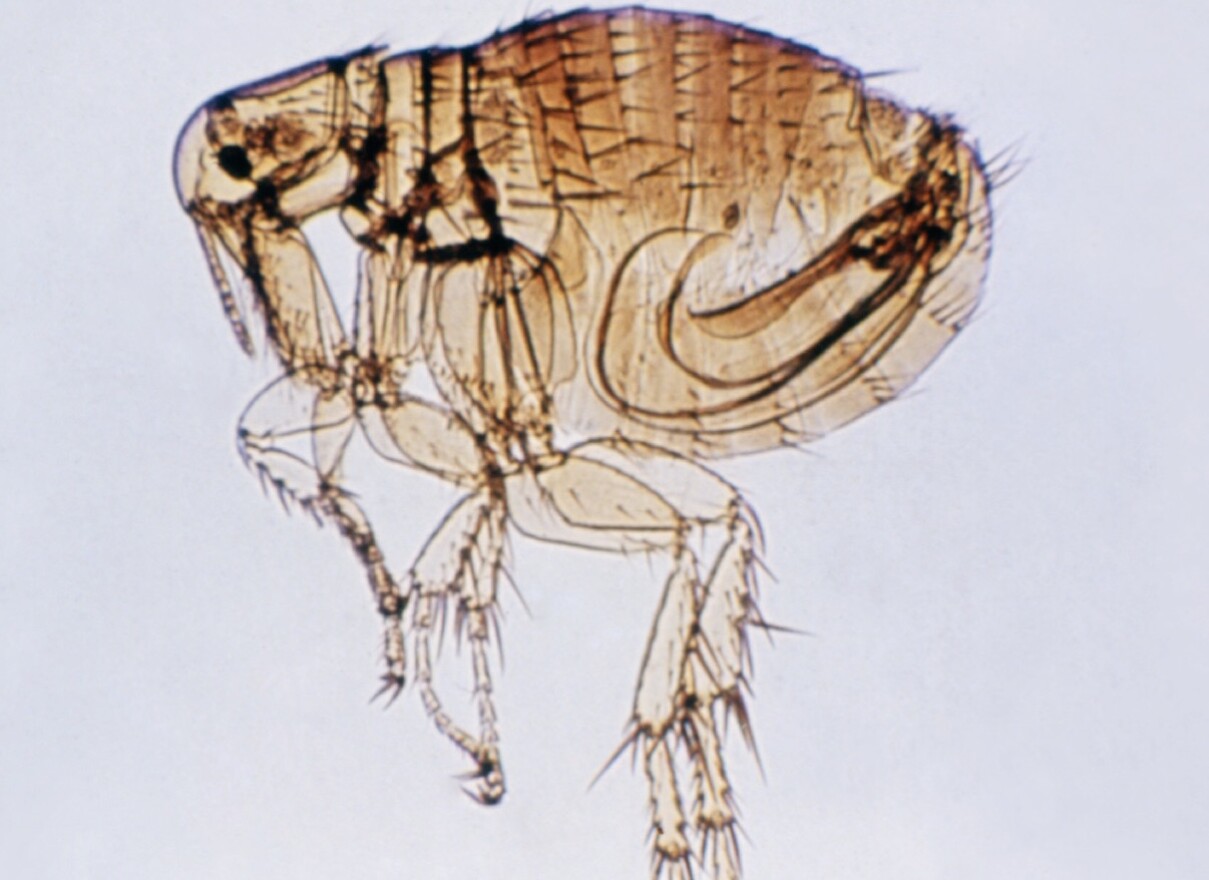From Texas Standard:
As Bill Jones and his wife Kathy Murray of Austin found out in 2008, getting sick with murine typhus can be scary business. When a high fever persisted for five days, Jones sought help at a local hospital. There, he spent nine more terrifying days, while doctors searched for an explanation for his symptoms and nearly operated on his liver unnecessarily.
“They called me and said I needed to get back over to the hospital. They had determined Bill has a dark area on his liver, ‘cause they were testing everything. And that he was going to need to go in for surgery,” Murray says.
Alarmed, Murray sought out a second opinion from a specialist who found that her husband’s liver was fine. Meanwhile, she had become convinced that he had the bacterial infection, murine typhus, known to be spread by rats and their fleas. But she struggled to get his doctors to take this idea seriously. The disease had been extremely rare in Travis County, which includes Austin, for decades. But in 2008, seemingly out of the blue, it would sicken 33 people there, most of whom required hospitalization.
Murray recalls telling doctors: “Will you please treat Bill for typhus? He has all the symptoms of typhus: 104 degrees [temperature]; going from feeling very hot to his entire body shaking violently – it was really scary. And, he [was] very sensitive to light; he was wearing sunglasses in the hospital. He had a pinpoint rash on his arms and legs – that’s another symptom of typhus.”

The problem with typhus, especially this time of year, is that it can be mistaken for the flu. And though it was considered largely eradicated from Texas, it’s now making a comeback.
It turned out that Jones did indeed have murine typhus, and he finally received the antibiotics he needed and has made a full recovery. But Texans continue to contract the disease in growing numbers. In 2008, 157 cases were reported statewide, but a decade later, that number had more than quadrupled to 738. Today there is a significant presence of the disease in Dallas, Austin, Houston, San Antonio and Galveston, as well as Corpus Christi, and the Rio Grande Valley.
Part of the reason for the resurgence may be that the disease appears to be spread not just by rats, but by animals many people don’t view as disease carriers. In fact, says Bonny Mayes, an epidemiologist with the Texas Department of State Health Services, the term “murine” which means “related to mice or other rodents” is no longer accurate.
“We actually prefer the term 'flea-borne typhus' to 'murine' because we find that many of our cases appear to be associated more with feral cat and opossum exposure as opposed to rodents,” Mayes says.
Jeff Taylor, the Epidemiology and Disease Surveillance Unit manager with Austin Public Health, was part of a team that studied the problem in Austin.
“It’s the opossums and the raccoons that are wandering into the yard. And then the fleas that are feeding on them are hopping off and then hopping onto your cat to get a blood meal, and then those cats are let into the house. So, when the cat’s not available and that flea’s in the carpet, they’ll hop on you and get a blood meal and then transmit the bacteria that causes typhus,” Taylor says.
Taylor says people should avoid leaving pet food outside for their own pets or other animals – that contributes to the problem.
Even things like compost or spilled birdseed can bring these animals into your backyard, while thick undergrowth and open crawlspaces can provide places for them to nest and hide.
Despite the rise of murine typhus in Texas cities, doctors still fail to recognize and diagnose it. Dr. Sarmistha Hauger is a pediatric infectious disease specialist with Dell Children’s Hospital in Austin who has seen many cases over the years. She says it gets overlooked a lot, and that it’s often mistaken for flu, even when it’s not flu season.
“Fever is the one thing that most people do have; not everybody has to have rash and not everybody has to have the other complaints. But mostly fever, headache, muscle aches are the big three that we’ve seen patients present with," Hauger says.
When assessing a patient, Hauger says it’s important that doctors know about typhus in their community and that they determine whether a patient may have been exposed to fleas. Lab tests can help doctors zero in on the correct diagnosis, too.
“There’s no office test that’s going to tell us. But there are some tests that are supportive evidence that can be done very quickly,” she says.
A confirmed diagnosis requires more time and testing, but experts agree that treatment with the antibiotic doxycycline should be given as soon as typhus is deemed likely. That’s because delayed treatment can lead to more serious outcomes. The disease killed at least seven people in Texas between 2012 and 2017. Bonny Mayes of state health services was part of a team that studied Texas murine typhus fatalities, and says delayed treatment appears to have played a role:
“The majority of those cases, doxycycline was actually not initiated until later in the course of illness,” she says.
And while doctors may be doing their best to treat patients appropriately, that may not always be enough. For Bill Jones, having his wife pushing for answers made all the difference in 2008.
“I’m very grateful for my wife for doing the research on the internet and finding out all the symptoms that seemed to be overlooked. So, I appreciate her research on that. That’s what saved me, I feel like,” he says.
Support for Texas Standard’s ”Spotlight on Health” project is provided by St. David’s Foundation.
Copyright 2020 KUT 90.5. To see more, visit KUT 90.5. 9(MDAwMTM1NDgzMDEyMzg2MDcwMzJjODJiYQ004))

